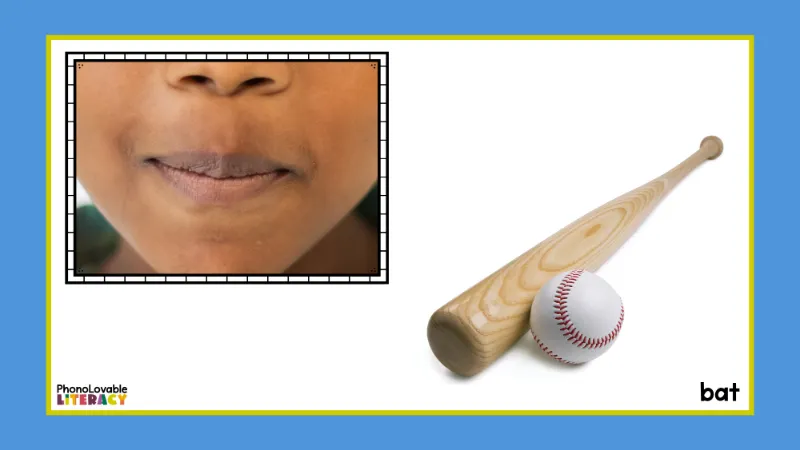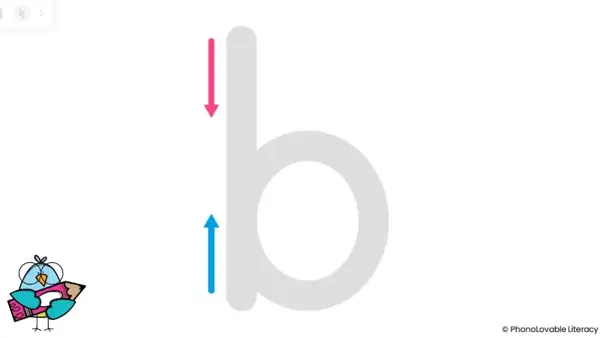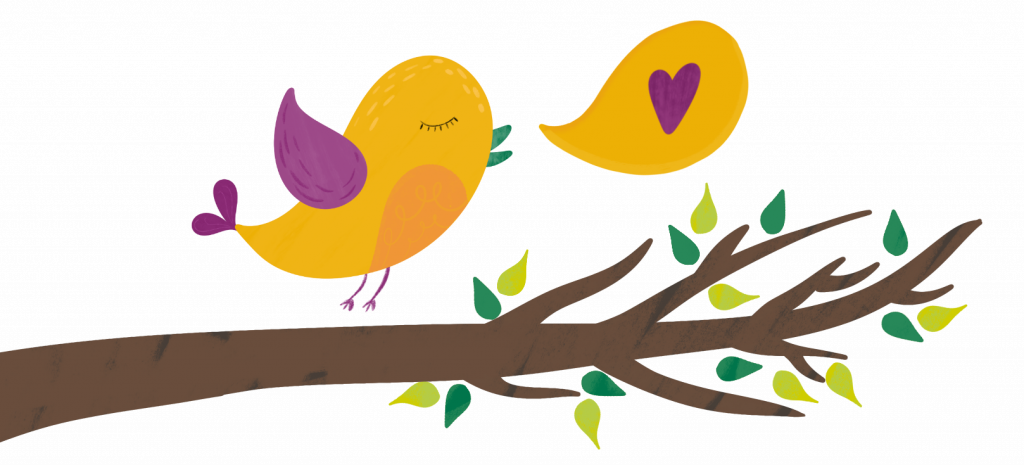Are you looking for new ways to introduce the letter B?
If you teach preschool or kindergarten students, you know that feeling of excitement when children learn a new letter sound for the first time!
But what’s the best way to introduce each letter and its corresponding sound (or sounds)? Is there even a best way?
There’s no one agreed-upon best sequence to introduce letters. Personally, I don’t go in order from a-z. I start with the most common letters (such as s, a, t, p, i, n, and m) that young readers will find in simple words. You may have a different sequence that you prefer. While I don’t have strong feelings about the particular order in which letters and sounds are introduced, I do have an enthusiastic preference for HOW to introduce each sound and its related letter.
Many programs will have you say something like:
“This is the letter b (showing the printed letter). B says /b/, as in bat (showing a picture of a bat). Repeat after me, B, bat, /b/”.
That’s one way to do it. It’s how I did it for about a decade.
However, after years of diving into research studies and professional books, as well as attending countless trainings in structured literacy, I’ve made simple changes to my instructional routine of teaching letter sounds and have seen great results.
I’m sharing what I do and why I do it below. I hope you get some inspiration for something new and easy to try!
Routine for Introducing the Letter B and Its Sound
You can watch this video to get an idea of the entire routine. You can even play it for your students!
Start with speech.
Why?
Our brains are wired for speaking, not reading. Talking comes naturally; reading does not. I made the switch to start with speech, as opposed to print, for that reason. I’ve also noticed increased engagement this way. Starting my lesson by asking my kids to repeat words orally, and showing photographs of things they’re interested in like basketballs and bats, is not only less intimidating to young children who have no idea how to read at this point, but it’s also more fun.

How?
Say 3-6 words that begin with the letter b, such as basketball, bear, bananas, birds, bats, and ball. Ask children to repeat each word after you say it. Showing an image of each word helps add interest and can be especially helpful for students with limited English vocabulary and kids who struggle with attention. Tell students that all of these words begin with the sound /b/. Try not to say “buh”; instead, try to clip the sound as much as you can. This helps when students start to blend words.
Draw attention to what your mouth does when you make the /b/ sound.
Why?
Letters and sounds are pretty abstract when you think about it. Who decided that the sound /b/ should be represented by the letter b? Letters have no inherent meaning. We need to explicitly teach students to connect a letter to a sound and vice versa. Drawing our kids’ attention to how our mouths look and feel while producing the sound helps make an abstract concept more concrete.

How?
Ask students to notice what their mouth is doing to make the sound /b/. If you are in small group, hold up a small mirror to let students look at their own mouths. Draw attention to the fact that our lips need to press together. Notice how it makes a buzzy or noisy sound in our throats. Place your hand on the front of your throat. Here’s where visuals come in handy again. Display a sound articulation card (mouth pic) for students to see. For fun, I challenge them to make the /b/ sound WITHOUT touching their lips together. It’s impossible! But you’ll get some giggles as your kids try. This also builds a strong memory that we need to close our mouths to make the /b/ sound.
Introduce the printed letter with an EMBEDDED mnemonic.
Why?
Research going back decades revealed that using embedded images, keyword pictures displayed within the letter as opposed to showing a picture separate from the letter, resulted in students improving both the acquisition AND retention of letter-sound correspondences. In fact, it was more effective and efficient. Using pictures, especially ones of relatable objects, to help kids associate letter-sound relationships makes sense. But it was great to read several research studies to confirm this!

How?
Here is where you’ll first show your students the actual letter. But not just a plain letter, an embedded letter. The image of a keyword such as baseball or bat embedded IN the letter helps solidify the connection between letter and sound. The shape of a baseball and bat, corresponding to the shape of the lowercase letter b, will serve as a reminder of the letter-sound relationship.
Model and practice how to write the letter.
Why?
Reading and writing are interconnected. We teach letter sounds so that students may not only decode new words, but learn to write them as well. As an interventionist who works with students from kindergarten to 4th grade, I’ve seen how hard it is to undo inefficient letter formation habits. For the past few years, I’ve made it a point to prioritize letter formation as early as possible.

How?
I prefer to keep my letter formation language simple. You may have different wording from a program you’ve used, or you may wish to change up how you say this, but here’s what I say as I model how to write the lowercase letter b.
“Start at the top. Straight line down. Push up and around.” I model with my hand in the air and/or show an animated slide on my computer (in small group) or smart TV (in whole group). Ask students to follow along with their fingers in the air. If children are seated at desks, ask them to finger-write it on the desk.
If you are tutoring or have one-on-one instruction, you can also do this in a tray of sand or beads. Shaving cream is also an option if you have a thick towel nearby to clean up the mess! None of those options are necessary though. Sky or desk writing is plenty effective!
I usually have students practice without a writing utensil a few times before I ask them to write with a dry-erase marker or pencil. This is just so I can make sure they’ve got the movements down or at least the letter-formation language (“Straight line down. Push up and around. “) before they put it on paper.
Research-Aligned Alphabet Resources
Need easy-to-use resources to implement the steps above?
Here are my recommendations for introducing the letter b and other letters to your kindergarten students:
Initial Sound Slides: These no-prep slides introduce each letter sound in the most effective and efficient way. With each click, you will show images of interesting photographs containing the beginning sound, a photo of a real kid making the sound along with a keyword image, the letter with an embedded mnemonic image, and lastly, an animated letter formation slide (one for uppercase and one for lowercase letters).
Mnemonic Alphabet Articulation Mouth Cards | Alphabet Posters with Real Pictures: If you prefer a paper option or don’t have access to digital resources, you may like these printable, 1-page posters of mouth pics along with the embedded mnemonic letters. It’s also a nice way to display the alphabet if you have classroom wall space.
Alphabet Picture Cards with Embedded Mnemonics: This set of printable pages comes with embedded letter cards in two sizes. Teach phonemes for 21 consonants, 5 short vowels, AND consonant digraphs WH, TH, SH, CH, and CK.
Get a free set of small embedded letter cards when you join us in our newsletter community!
Since b and d reversal is a source of frustration for some students, I like to use an additional cue here as well. You may like this free set of posters showing a few options of visuals to help kids distinguish b from d.
Looking for an “everything bundle” of embedded letter resources, including digital slides, letter cards, worksheets, games, and more? Save nearly 50% and get all 12 resources. Get your students quickly and effectively mastering letter sounds so they can begin the even more exciting discovery of how to read and write words!
Sources:
Ehri, L. C., Deffner, N. D., & Wilce, L. S. (1984). Pictorial mnemonics for phonics. Journal of Educational Psychology, 76(5), 880–893. https://doi.org/10.1037/0022-0663.76.5.880
Ehri, L. C. (2013). Orthographic Mapping in the Acquisition of Sight Word Reading, Spelling Memory, and Vocabulary Learning. Scientific Studies of Reading, 18(1), 5–21. https://doi.org/10.1080/10888438.2013.819356
Ehri, L.C. (2022). What Teachers Need to Know and Do to Teach Letter–Sounds, Phonemic Awareness, Word Reading, and Phonics. The Reading Teacher, 76(1), 53-61. https://doi.org/10.1002/trtr.2095
McNamara, G. (2012). The effectiveness of embedded picture mnemonic alphabet cards on letter recognition and letter sound knowledge. Theses and Dissertations. 302. https://rdw.rowan.edu/etd/302
Shmidman, A., & Ehri, L. (2010). Embedded Picture Mnemonics to Learn Letters. Scientific Studies of Reading, 14(2), 159–182. https://doi.org/10.1080/10888430903117492

